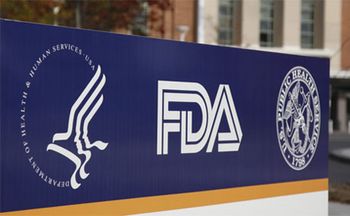
This week's much-anticipated meeting of FDA’s vaccine advisory committee will address critical issues related to the testing and approval of vaccines to prevent COVID-19 infection.

This week's much-anticipated meeting of FDA’s vaccine advisory committee will address critical issues related to the testing and approval of vaccines to prevent COVID-19 infection.

Missteps threaten agency’s independence as vaccines seek finish line.

Biopharma must find sustainable models for public policy engagement.

FDA has published updated Emergency Use Authorization (EUA) requirements for new coronavirus preventives.

With all eyes on efforts to research and test potential vaccines and therapies to combat the coronavirus pandemic, fears about overly accelerated development programs has heightened demands for wider access to information on study protocols, statistical analysis plans, and early results.

President Trump has taken on the pharma industry in a surprise move making significant cuts in reimbursement for drugs covered by Medicare.

Tasked with setting up framework for essential medicine program.

Peter Kohut analyses the findings of a survey on how life sciences companies are capitalizing on opportunities to transform workload and data quality management using the latest smart technology.

Industry leaders insist they will maintain high standards for clinical trials and regulatory submissions for new vaccines and therapeutics to combat COVID-19.

FDA to resume “prioritized domestic inspections” for certain regulated products put on hold by COVID-19.

White House initiative to encourage U.S. production of essential medicines calls on FDA to set program parameters for implement main aspects.

How companies are leveraging Real Word Evidence to evaluate therapies under real world conditions in a broader population at a lower cost than using Randomized Clinical Trials.

As biopharma companies and research institutes advance the development of promising vaccines against COVID-19, policy makers and health officials have intensified deliberations on strategies for ensuring fair and equitable distribution of anticipated preventives.

Patient advocates, research experts, and industry are calling for more user fee revenues to support CBER programs to advance innovative therapies.

FDA's plans to resume inspections of some US regulated facilities this week are not clear on which sites will be visited and what alternative oversight strategies will apply where on-site inspections are difficult.

In recent months, many pharma businesses have pivoted to entirely new product lines against a backdrop of unprecedented disruption to the supply chain. Gurdip Singh provide pointers to ensure companies are ready to adapt to change.

Duncan van Rijsbergen highlights key considerations for life sciences companies tackling data quality issues.

Stresses the need for fair pricing of therapies, while ensuring access.

As providers and payers exert ever greater pressure on the pharma industry, will they force manufacturers to offer significant pricing concessions and will this become the new normal for the US healthcare system? Brett Gardiner reports.

The need for treatments to combat the spread of COVID-19 is promoting greater cooperation among drug regulatory authorities around the world, with FDA officials communicating more frequently with their counterparts in Europe, Canada, Japan and other nations through established programs and agreements.

Xavier Duburcq describes how pharma leaders can convert compliance from a cost center to a critical success factor.

After revoking its Emergency Use Authorization for medicines thought to treat COVID=19, the FDA is looking to regain credibility.

Will efforts to limit all returns on investment drive biopharma companies away from developing much-needed interventions for COVID-19.

As authorizations skyrocket, review standards face questions.

The White House looks to bring in credible experts for its Operation Warp Speed initiative to advance therapies and vaccines to combat the coronavirus pandemic.